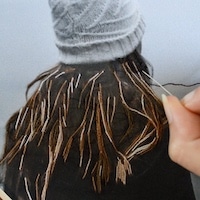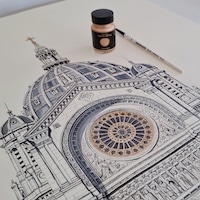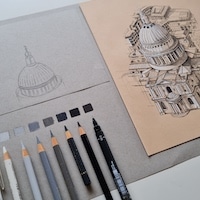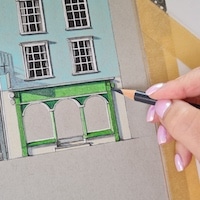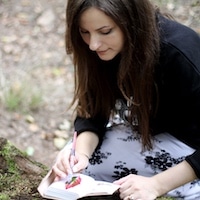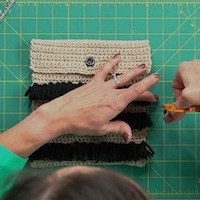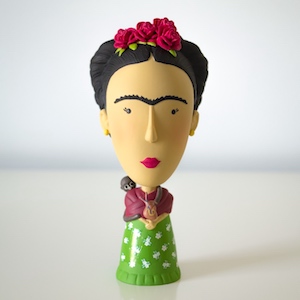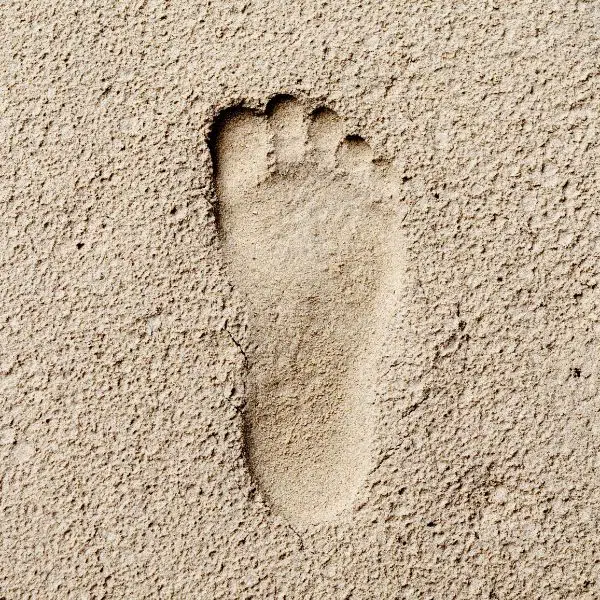A 4,000-year-old handprint has been uncovered on an ancient Egyptian clay artifact, offering a tangible glimpse into the lives of people from the distant past. The marking—featuring distinct indentations of the palm and fingers—was discovered by researchers at Cambridge University’s Fitzwilliam Museum on the base of a clay “soul house,” a handbuilt model of a building often placed in tombs to hold food offerings.
The soul house dates back to around 2055–1650 BCE, and examiners at the Fitzwilliam Museum believe the handprint may have been made when an ancient Egyptian potter moved it while it was still wet. The maker likely started by building a framework with wooden sticks, then covered it with clay to create a two-story structure supported by pillars. The staircases were simply formed by pinching the wet clay. When it was fired, the wood burned away, leaving hollow spaces inside.
From October 2025, The Fitzwilliam Museum will host the Made in Ancient Egypt exhibition, where the unique soul house will be the focus. “I have never seen such a complete handprint on an Egyptian object before,” says Helen Strudwick, the senior Egyptologist and curator of the exhibition. “You can just imagine the person who made this, picking it up to move it out of the workshop to dry before firing.”
The ancient Egyptians are known for their decorative pottery, but clay objects like this one shed fascinating light on their beliefs. Historians learned that offering food and drink to the deceased was a significant practice, with soul houses being used to display the nutritional offerings. This particular soul house features sculpted shapes at its base, representing bread, a lettuce, and an ox’s head.
The handprint makes this soul house stand out from other ancient Egyptian artifacts today, but it’s easy to imagine that the person who made it likely regretted accidentally leaving their mark. Findings like these bring us even closer to our past, helping us form a story around the object.
Check out images of the soul house below and find out more about the discovery on the Cambridge of University website.
A 4,000-year-old handprint has been uncovered on an ancient Egyptian clay artifact, offering a tangible glimpse into the lives of people from the distant past.

Distinct indentations of the palm and fingers can be seen on the bottom of this soul house, which were often placed in tombs to hold food offerings.

Can you see where the maker’s fingers once were? Historians believe the ancient Egyptian potter must have moved it while it was still wet.

It also features sculpted clay shapes at its base, representing bread, a lettuce, and an ox’s head.

The soul house represents a two-story building, complete with hand-sculpted pillars.

Fitzwilliam Museum: Website | Facebook | Instagram
Source: 4000-year-old ancient Egyptian handprint discovered
Related Articles:
Researchers Discover the First Royal Tomb of an Ancient Egyptian Pharaoh in Over a Century
What Do Ancient Egyptian Mummies Smell Like? The Answer May Surprise You
4,100-Year-Old Tomb of Ancient Egyptian Royal Physician Unearthed in Saqqara
1,600-Year-Old Ancient Egyptian Socks Look Like Modern Fashion Statements





























